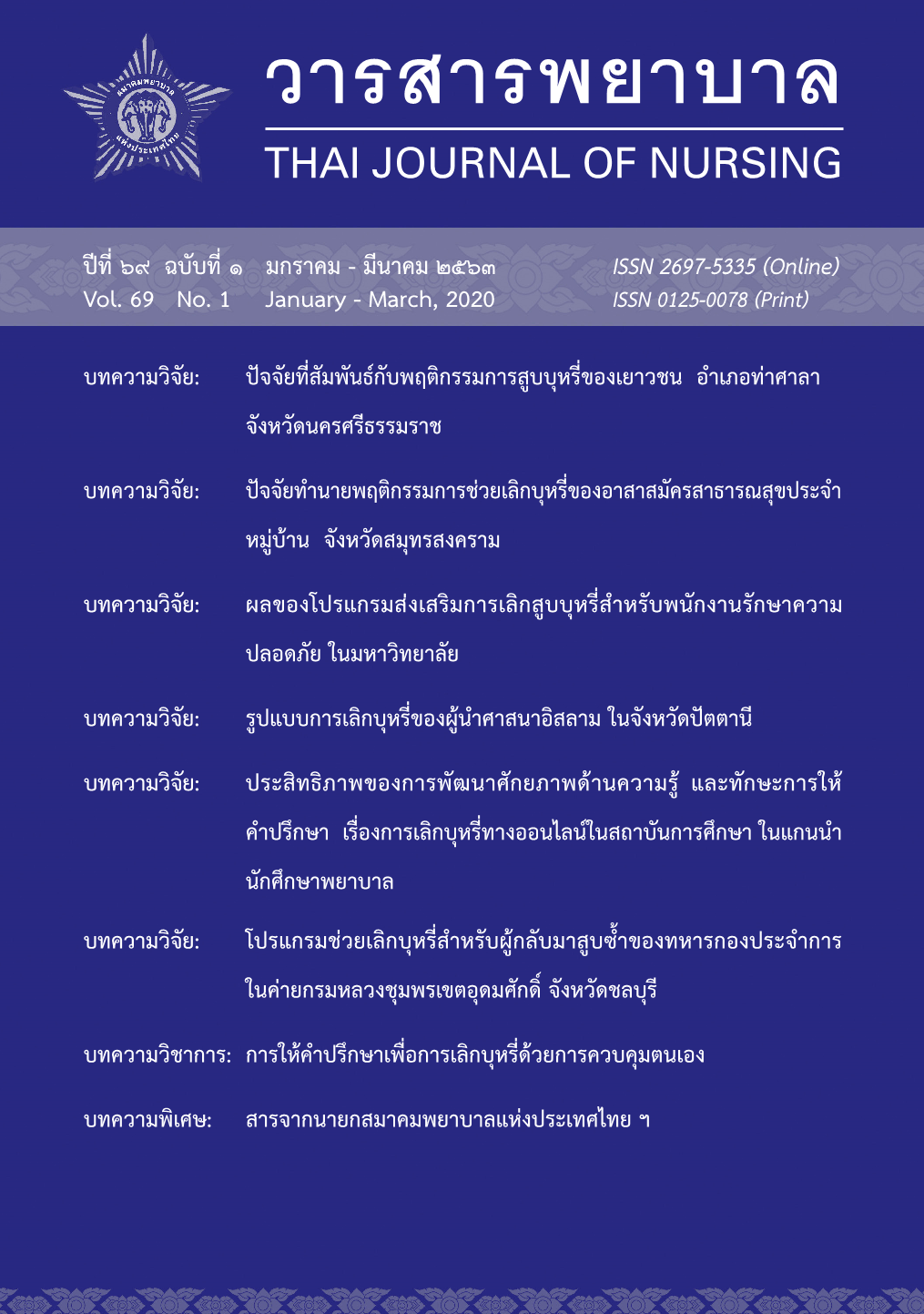Counselling for smoking cessation by self- regulation
Main Article Content
Abstract
This academic article aims to present a process of counselling for smoking cessation by self-regulation. Smoking is the leading preventable cause of death worldwide. Tobacco cessation can prevent tobacco-related diseases such as coronary heart disease, chronic obstructive pulmonary disease and lung cancer. The strategies which can be used for smoking cessation, are abruptly quitting without assistance, and cutting down then quitting. However, only 5-7 percent of quit attempts without assistance are successful in long-term. Behavioral therapy or medications has 10-30 percent of successful smoking cessation, but its combination can increase the chance of successful rate into 30-40 percent. The most important factor for smoking cessation is self-regulation because no one can help if a person does not want. Counselling for smoking cessation by self-regulation is the method that allow person to activate, monitor and control his behavior when facing internal or external challenges in order to achieve desirable outcomes.
Article Details
References
มูลนิธิรณรงค์เพื่อการไม่สูบบุหรี่.
ผ่องศรี มรกต. (2559). การบำบัดทางเลือกเพื่อช่วยเลิกบุหรี่วิถีไทย (พิมพ์ครั้งที่ 5). กรุงเทพมหานคร:
อัพทรูยู ครีเอทนิว.
ว. วชิรเมธี. (2560). กลั่นทุกข์ให้เป็นสุข. กรุงเทพมหานคร: สัปปายะพับลิชชิ่ง.
ศูนย์วิจัยและจัดการความรู้เพื่อการควบคุมยาสูบ. (2561). รายงานพฤติกรรมการบริโภคยาสูบของ
ประเทศไทย พ.ศ. 2561. กรุงเทพมหานคร: เจริญดีมั่นคงการพิมพ์.
Bandura, A. (1991). Social cognitive theory of self-regulation. Organizational
Behavior and Human Decision Processes, 50(2), 248-287.
Carver, C. S., & Scheier, M. F. (2000). On the structure of behavioral self-regulation. In
M. Boekaerts, P. R. Pintrich, & M. Zeidner (Eds.). Handbook of self-regulation
(pp. 41-84). San Diego: Academic Press.
Coates, V. E., & Boore, J. R. (1995). Self-management of chronic illness: Implications
for nursing. International Journal of Nursing Studies, 32(6), 628-640.
DiClemente, C. C., Prochaska, J. O., Fairhurst, S. K., Velicer, W. F., Velasquez, M. M., &
Rossi, J. S. (1991). The process of smoking cessation: An analysis of
precontemplation, contemplation and preparation stages of change. Journal of
Consulting and Clinical Psychology, 59(2), 295–304.


